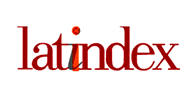O MOVIMENTO INTERNACIONAL DA CRUZ VERMELHA E DO CRESCENTE VERMELHO
Keywords:
history of the red cross, war law, international humanitarian law, international organizations, conferences of genevaAbstract
The Red Cross was originally created by a single man, Henry Dunant. He has conceived it during the cruel battle of Solferino, for the unification of Italy. The situation of thousands of helpless wounded demanded a neutral international organization to assist them. Such an organization was born in the 1st Conference of Geneva in 1863 and, thereafter, has begun not only to take care of the war casualties but also to develop the humanitarian law. With World War I and II, it has spread out all over the world. The Conferences of Geneva in the beginning of the XX century became notorious for creating the main headlines of humanitarian law, which helped to control the violence of armed conflicts. Its structure is decentralized and every country has its own independent organization. Nevertheless, its unity and coherence are granted by the International Red Cross Comity in Geneva, which defines its fundamental principles. Among them, the principle of “humanity” summarizes and orients the others.
References
ALBUQUERQUE DE MELLO, Celso D. Curso de Direito Internacional Público. 12. ed. v. 2. Rio de Janeiro: Editora Renovar, 2000. BORY, Françoise. Génese e Desenvolvimento do Direito Internacional Humanitário. Genebra: Comité Internacional da Cruz Vermelha, 1982. ______. Cruz Vermelha & Crescente Vermelho, Retrato dum Movimento Internacional, Genebra: Comité Internacional da Cruz Vermelha. BROWN, Pam. Henry Dunant, o Fundador da Cruz Vermelha, sua compaixão salvou milhares de vidas. Tradução para o português pela Cruz Vermelha Brasileira. Edição Exley Publications Ltd., 1988. BUGNION, François. Le Comité International de la Croix Rouge et la Protection des Victimes de la Guerre. 2. ed. Genève: Comité International de la Croix Rouge, 1994. CONVENÇÕES de Genebra de 12 de agosto de 1949. Edição patrocinada pelo Comitê Internacional da Cruz Vermelha. Lisboa: Cruz Vermelha Portuguesa, 1985. COSTA, C. Vences e. Centenário do Falecimento de Doutor José António Marques, Fundador da Cruz Vermelha Portuguesa, 1884- 1984. Separata do Boletim “Informação” da C.V.P., 8 de novembro de 1984. DESCUBRA o CICV. Genebra: Comité Internacional da Cruz Vermelha, dezembro de 2010. DUNANT, Henry. Un souvenir de Solférino. réproduction textuelle de l’originale. Genève: Comité International de la Croix Rouge, 1862. MAGALHÃES, Ana Maria; ALÇADA, Isabel. A Cruz Vermelha. Lisboa: Cruz Vermelha Portuguesa/Editorial do Ministério de Educação, 1998. MANUAL de Difusão de Doutrina e Direito Internacional Humanitário (DIH). Brasília: Comité Internacional da Cruz Vermelha, 2006. PICTET, Jean S. Les Principes de la Croix Rouge. Genève: Comité International de la Croix Rouge, 1965. PROTOCOLOS Adicionais às Convenções de Genebra de 12 de agosto de 1949. Edição patrocinada pelo Comitê Internacional da Cruz Vermelha. Lisboa: Cruz Vermelha Portuguesa, 1985. Site da Cruz Vermelha Internacional na internet, www.cicr.org. Site da Cruz Vermelha Brasileira na internet, www.cruzvermelha.org.br. Site da Cruz Vermelha Portuguesa na internet, www.cruzvermelha.pt. SOARES, Maria Barroso. Cruz Vermelha. Colecção Fundação Má- rio Soares. Lisboa: Editora Gradiva, 2002.
Downloads
Published
How to Cite
Issue
Section
License
Authors who publish in this Journal agree to the following terms:
- Authors retain copyright and grant the Journal of Constitutional Research the right of first publication with the article simultaneously licensed under the Creative Commons - Attribution 4.0 International which allows sharing the work with recognition of the authors and its initial publication in this Journal.
- Authors are able to take on additional contracts separately, for non-exclusive distribution of the version of the paper published in this Journal (eg.: publishing in institutional repository or as a book), with a recognition of its initial publication in this Journal.
- Authors are allowed and encouraged to publish their work online (eg.: in institutional repositories or on their personal website) at any point before or during the submission process, as it can lead to productive exchanges, as well as increase the impact and the citation of the published work (see the Effect of Open Access).


















